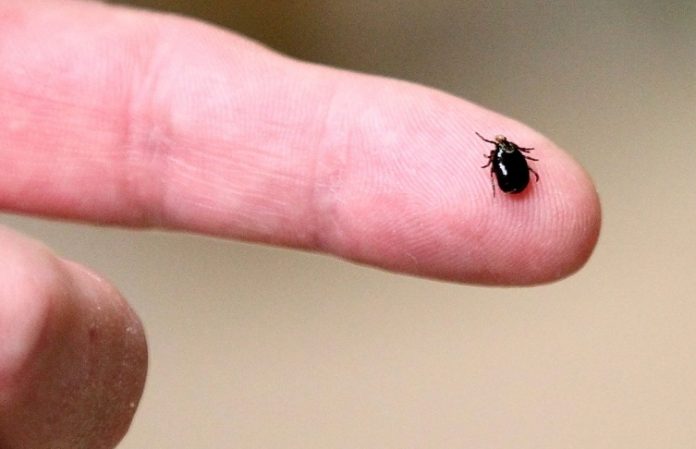Preliminary estimates released by the Centers for Disease Control and Prevention indicate that the number of Americans diagnosed with Lyme disease each year is around 300,000.
This early estimate is based on findings from three ongoing CDC studies that use different methods, but all aim to define the approximate number of people diagnosed with Lyme disease each year. The first project analyzes medical claims information for approximately 22 million insured people annually for six years, the second project is based on a survey of clinical laboratories and the third project analyzes self-reported Lyme disease cases from a survey of the general public.
Each year, more than 30,000 cases of Lyme disease are reported to CDC, making it the most commonly reported tick-borne illness in the United States.
For many years the CDC has suspected that doctors have under reported Lyme disease diagnoses but the amount of under reporting was staggering. The new figure is the CDC’s most comprehensive attempt at a better estimate. The number comes from a survey of seven national laboratories, a national patient survey and a review of insurance information.
The new estimate suggests that the total number of people diagnosed with Lyme disease is roughly 10 times higher than the yearly reported number. This new estimate supports studies published in the 1990s indicating that the true number of cases is between 3- and 12-fold higher than the number of reported cases.
“We know that routine surveillance only gives us part of the picture, and that the true number of illnesses is much greater,” said Paul Mead, M.D., M.P.H, chief of epidemiology and surveillance for CDC’s Lyme disease program. “This new preliminary estimate confirms that Lyme disease is a tremendous public health problem in the United States, and clearly highlights the urgent need for prevention.”
CDC continues to analyze the data in the three studies to refine the estimates and better understand the overall burden of Lyme disease in the United States and will publish finalized estimates when the studies are complete. Efforts are also underway at CDC and by other researchers to identify novel methods to kill ticks and prevent illness in people.
“We know people can prevent tick bites through steps like using repellents and tick checks. Although these measures are effective, they aren’t fail-proof and people don’t always use them,” said Lyle R. Petersen, M.D., M.P.H, director of CDC’s Division of Vector-Borne Diseases. “We need to move to a broader approach to tick reduction, involving entire communities, to combat this public health problem.”
This community approach would involve homeowners trying to kill ticks in their own yards, and communities addressing a variety of issues. These issues include rodents that carry the Lyme disease bacteria, deer that play a key role in the ticks’ lifecycle, suburban planning, and the interaction between deer, rodents, ticks, and humans. All must be addressed to effectively fight Lyme disease.
Most Lyme disease cases reported to CDC through national surveillance are concentrated heavily in the Northeast and upper Midwest, with 96 percent of cases in 13 states. Lyme disease is caused by the bacterium Borrelia burgdorferi and is transmitted to humans through the bite of infected blacklegged ticks. Typical symptoms include fever, headache, fatigue, and a characteristic skin rash called erythema migrans. If left untreated, infection can spread to joints, the heart, and the nervous system.
Children may be more likely to get Lyme Disease because of their time spent doing outdoor activities. Walking in the woods, playing in the leaves, contact with pets, lack of knowledge of proper tick removal and Lyme disease acquisition, and lack of tick checks after spending time in tick habitats are all contributors o children contracting the disease. Additionally, limited recognition of the signs and symptoms of Lyme by parents and physicians may be other factors.
The development of chronic Lyme disease can affect the child physically, mentally, emotionally and create severe problems in the area of education. An early CDC study of children with Lyme disease indicated the median duration of illness was 363 days, school days missed averaged 103 days, and median duration of home instruction was 98 days. 78% of the parents stated that their children experienced a fall in grade point average during the time of illness.
Long term affects can include anxiety, depression, and fatigue, and the studies indicated Lyme in children may be accompanied by long-term neuropsychiatric disturbances, resulting in psychosocial and academic impairments. Reported cognition difficulties included short-term visual memory loss, short term & delayed verbal memory loss, worse attendance, grades, and subjective reports of memory problems.








